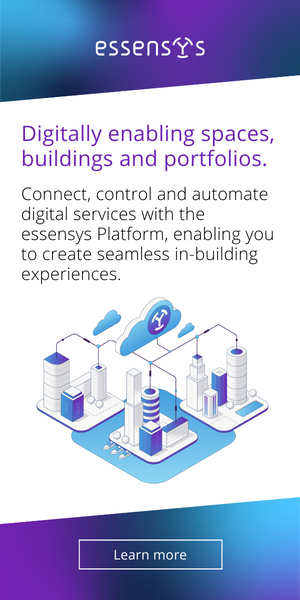Measuring Your Portfolio’s Financial Performance Is the Key to Making Future Investments
Anne Spulber, Products Manager, Technology, Retransform

The industry looks to nuances like market trends and patterns to run a commercial real estate (CRE) business - decide between buying or building on an empty lot, find corporate occupiers, manage the leases and then rinse and repeat. The rinse and repeat method only work if you know your portfolio is in the green.
Why is real estate financial modeling important?
Real estate financial modelling creates an effective way for real estate investors, lenders, asset managers and brokers to make informed decisions about their financial assets. It cuts out redundant intermediaries in real estate transactions, reduces costs and increases opportunities through improved data management and quality. With the proper financial tool, you can conduct sensitivity and scenario analysis with a built-in stress test that produces faster business decisions. Manage risk and understand the impact of changes on your property and portfolio KPIs.
Do you have the right assumptions in place?
Let’s take a practical example like The Project 50 that consists of 50 multi-use property project, hypothetically worth $2M each when all is said and done. One or two of the properties will not sell and you’re worried that the vacancy will negatively impact the foot traffic to your properties. The assumptions you make about backfilling that space are vital. Some assumptions to guide your financial modeling are the total end value, cost to purchase the lot, construction costs and let’s not forget upfront financing costs. Real estate projects require funding upfront to acquire the lot. After that, the developer makes monthly drawdowns to cover construction costs as the project progresses.
The construction costs are forecasted upfront by both the developer and the lender with the lender employing a surveyor to monitor the costs and sign off on the monthly drawdown requests during the project. Typically, drawdowns can vary from month to month as it outlays change and inflation occurs. A construction project usually won’t generate enough to any revenue until the construction is complete and the property is ready to occupy, which means the interest charged by the lenders is accrued and compounded over the term of the project. Choosing the wrong financing and not putting the proper assumptions can mean paying more interest than necessary. One way to prevent that is by managing your portfolio through a real estate financial modeling platform.
User-friendly – easy interface
Modern financial modelling tools go beyond spreadsheets and that ideology might scare one from using models, however ‘modern’ can also mean easier to use. A cloud-based application can produce clear projections, managing multiple property valuations all in one central, accessible location. The models can easily be integrated within your own property management system, giving you side by side comparisons amongst different data points on one or multiple buildings.
Custom reporting
The power of reporting puts you in control. The reports should be able to record performance metrics from property asset, capital revenue to gain+/loss- to CAM expenses and lease rent rolls. By combining the data, the valuations and future projections, a property owner can assess the information to their team with a 360-degree perspective. Another helpful tool are notifications and alerts which can be set up to flag thresholds being reached or highlight loss of revenue. It is so quick that ultimately, precautionary measures can be taken care of.
Full transparency
The right financial modeling tool can manage multiple property valuations, investments, budgets and portfolios, all in one central, accessible location. A cloud-based application should be able to provide visibility a specific asset or group of assets throughout the terms put in place. This in turn allows you to optimize your assets and portfolios by projecting their performance and financial future with much greater detail and accuracy with anyone, anywhere in the cloud.
Fintech is transforming real estate. By having a powerful financial modelling tool, it enables the precise projection of performance and growth that you won’t find in a spreadsheet.
This Week’s Sponsor
Retransform is a global real estate services provider that has spent the last 2 decades developing a specialized expertise in offering business management, technology and analytics solutions to the industry across the globe. They fundamentally are dedicated upon improving operational efficiencies while simultaneously driving bottom line benefits.
Read Next
 5/15/2025
5/15/2025
Tech, Talent and Transformation: 2025 Digie Finalists Announced For 27 years, Realcomm has presented the Digie Awards to acknowledge companies, real estate projects, technologies, and individuals that have advanced the commercial real estate industry through the strategic use of technology, automation, and innovation.
 5/15/2025
5/15/2025
Empowering Space Management with Data-Driven Visualization For effective CRE space management, it’s critical to centralize lease data, maximize rental square footage (RSF), improve energy efficiency and reconfigure spaces to meet changing needs.
 5/8/2025
5/8/2025
The AI-Powered Workplace Evolution: Redefining the Business Landscape In today's rapidly evolving business environment, the fusion of Artificial Intelligence (AI) and Workplace Management is revolutionizing the way organizations approach workspace optimization and operational efficiency.
 3/27/2025
3/27/2025
The Convergence of Edge Computing, Cloud, and AI in Building Automation and Smart Buildings In the built environment, we have seen the convergence of Operational Technology (OT) and Information Technology (IT), later expanding to include Workplace Technologies (WP).




%20(1)%20(1)%20(1).png)









